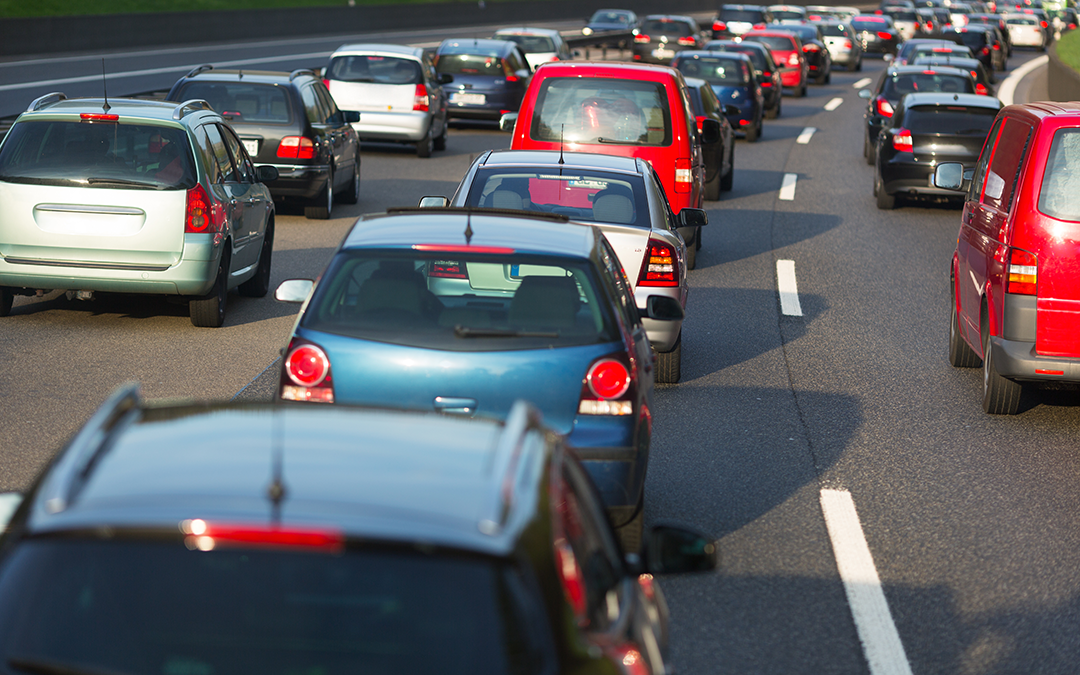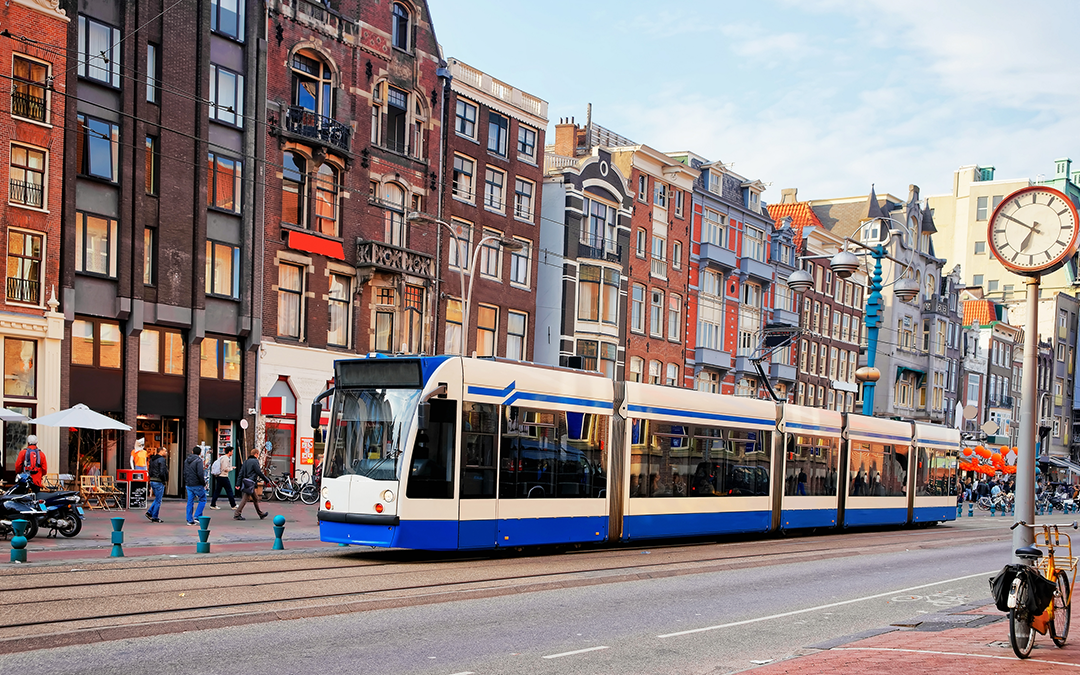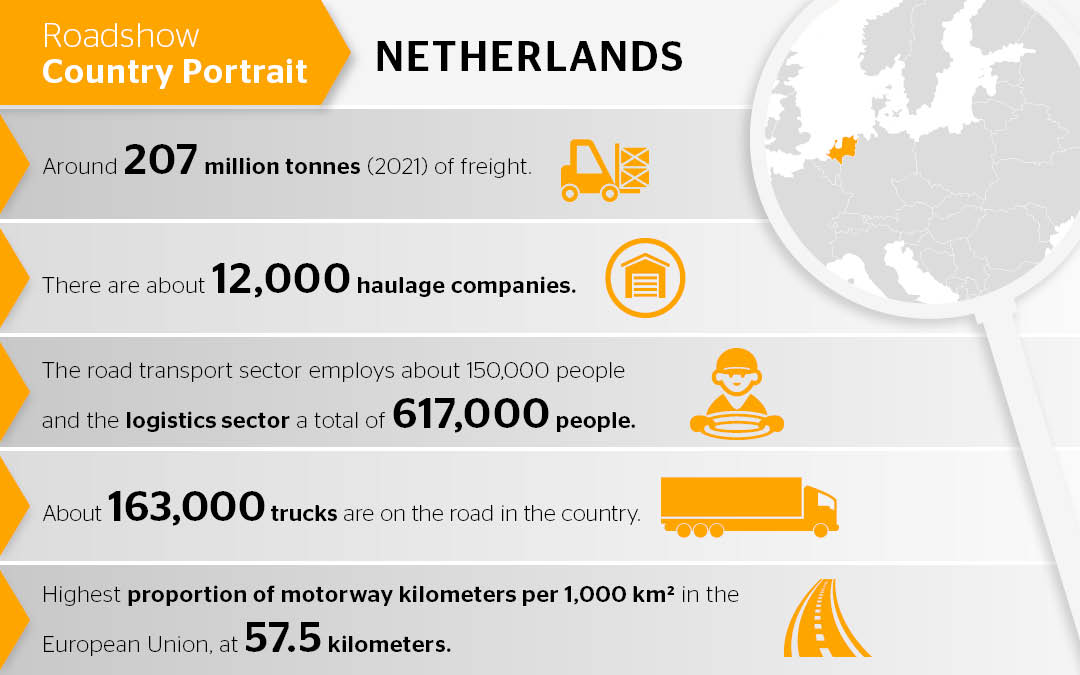The land of cheese, tulips and windmills is the most densely populated country in the EU. Stress and traffic jams on the roads are inevitable. Luckily, the Dutch are quite relaxed and open-minded. “Alles komt goed”, is a saying you often hear. As a major export nation and hub of global trade, the Netherlands transports around 207 million tonnes (2021) of freight over its roads every year. About 163,000 trucks are on the road in the country, of which about 108,000 are owned by transport companies. The road transport sector employs about 150,000 people and the logistics sector a total of 617,000 people. Thus, 1 in 12 people in the Netherlands work in the transport and logistics sector.
 Stress and traffic jams on the roads are inevitable. Photo: iStock
Stress and traffic jams on the roads are inevitable. Photo: iStock
Congestion speaks for itself
The Netherlands has the highest proportion of motorway kilometers per 1,000 km² in the European Union, at 57.5 kilometers. In total, the motorway network covers 2,360 kilometers. The oldest Dutch motorway is a section of the A12 between Voorburg and Zoetermeer, which was put into operation in 1937. The Koninklijke Nederlandse Toeristenbond (ANWB, German: Royal Dutch Tourist Board) regularly calculates the so-called congestion severity in the country on motorways and major country roads: Length multiplied by the duration of the traffic jams. First and foremost, there are daily traffic jams in the Randstad, the conurbation between Amsterdam, Utrecht, The Hague and Rotterdam. But congestion is also increasing in the eastern province of Gelderland with the cities of Arnhem, Nijmegen and Apeldoorn and in the south of the Netherlands.
 The Netherlands has the highest proportion of motorway kilometres in the EU. Photo: istock
The Netherlands has the highest proportion of motorway kilometres in the EU. Photo: istock
Seaports: Rotterdam & Co.
The majority of Dutch haulage companies are located in the economic centres in the southwest of the country, in the hinterland of the seaports. There are about 12,000 haulage companies in the Netherlands, 40 percent of which use only one vehicle. These are usually self-employed drivers who are contracted by large companies and know their way around the port of Rotterdam. The Dutch logistics and transport market has been characterized by takeovers, expansions and partnerships in recent years.
One of the most transported goods is milk. Every year, around twelve million litres of milk are transported by road from farms to manufacturers of dairy products in the Netherlands.
Speed limit on autosnelweg and the fines
Traffic is well controlled in the Netherlands. The speed limit is 50 km/h in built-up areas and 80 km/h outside built-up areas. On auto-roads, comparable to motorways, marked with an “N”, 100 km/h may be driven. The same applies to the autosnelweg, the Dutch motorways. At night, however, between 8 p.m. and 5 a.m., a speed limit of 130 km/h applies. If you are caught speeding, you will have to pay a fine. If you are caught driving 80 km/h instead of 50 km/h in built-up areas, you will pay just under 400 euros.
Tolls, mobile phone use and parking
In the Netherlands, there is no general toll for the autosnelweg The only exceptions are the Westerschelde Tunnel and the Kilt Tunnel, through which tolls are charged. However, the Netherlands is one of the Eurovignette countries, along with Denmark, Luxembourg and Sweden. Heavy goods vehicles with a permissible total weight of over 12 tonnes must purchase a so-called Eurovignette to use the roads. Proof of payment of the toll is provided by the so-called e-vignette. For the Netherlands and the other countries in the network, this is valid without restriction, depending on the tariff.
The use of mobile phones while driving is prohibited in the Netherlands, as it is in many other European countries. If you are caught using a mobile phone in the Netherlands, you can expect a fine of up to 380 euros. Parking in the Netherlands is subject to relatively strict rules. Among other things, parking is prohibited at kerbs marked in yellow. When it comes to enforcing fines, the Dutch are considered to be quite strict.

Tram in the city centre of Amsterdam. Photo: istock
Travelling by bus and train
The best way to travel in the Netherlands is by bicycle – met de fiets. There is also a well-developed network of public transport. There are buses, trams, metros and trains, and some water buses and ferries. All means of transport can be used with normal tickets or with a rechargeable chip card. This OV chip card is a rechargeable plastic card. If you are travelling without this chip card, you can also use the app Glimble. This Dutch app is from the transport company Arriva, but all important means of transport can be used with it, even in the German border area. Train, metro, bus and even rental bikes or scooters.
How do you like the chilled-out mentality of the Dutch? Tell us in a comment!


0 Comments